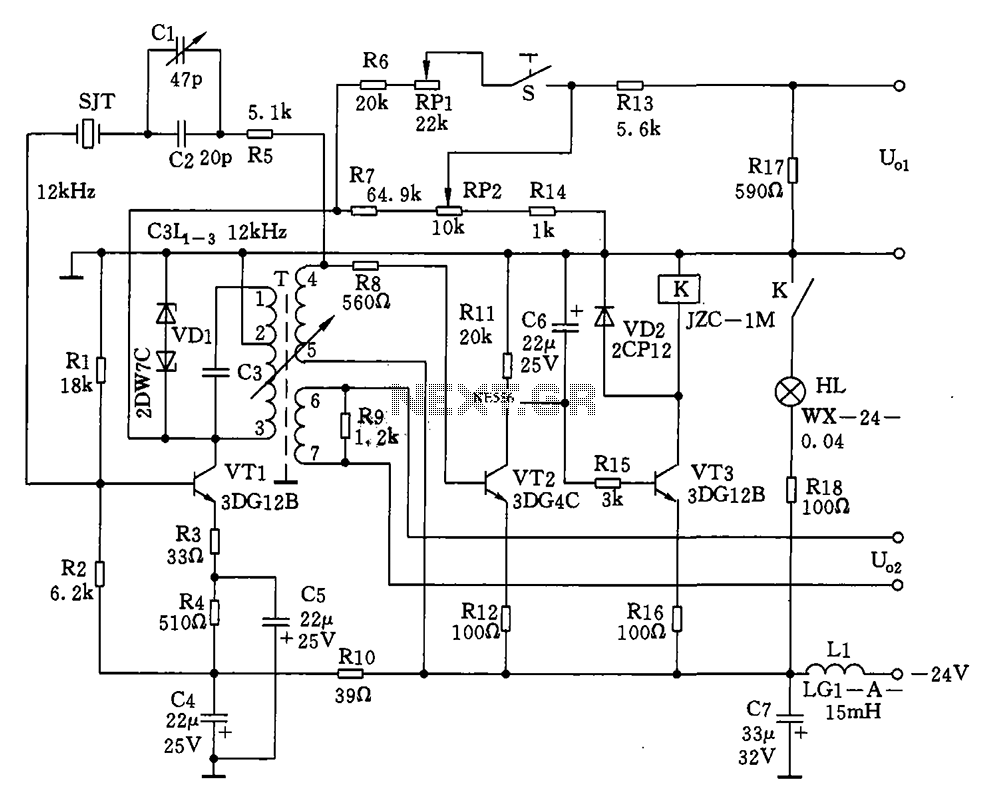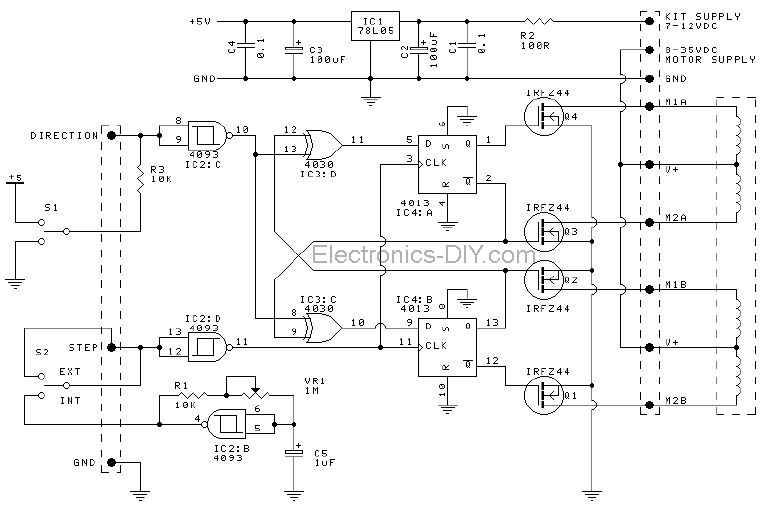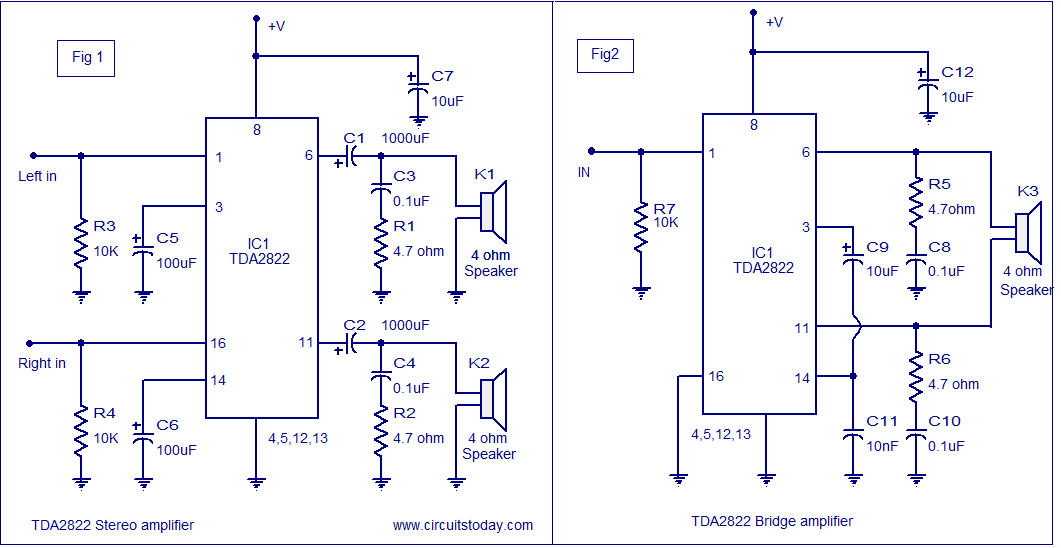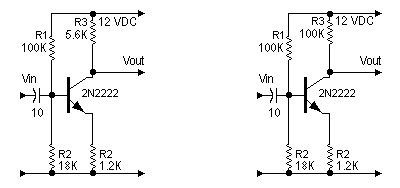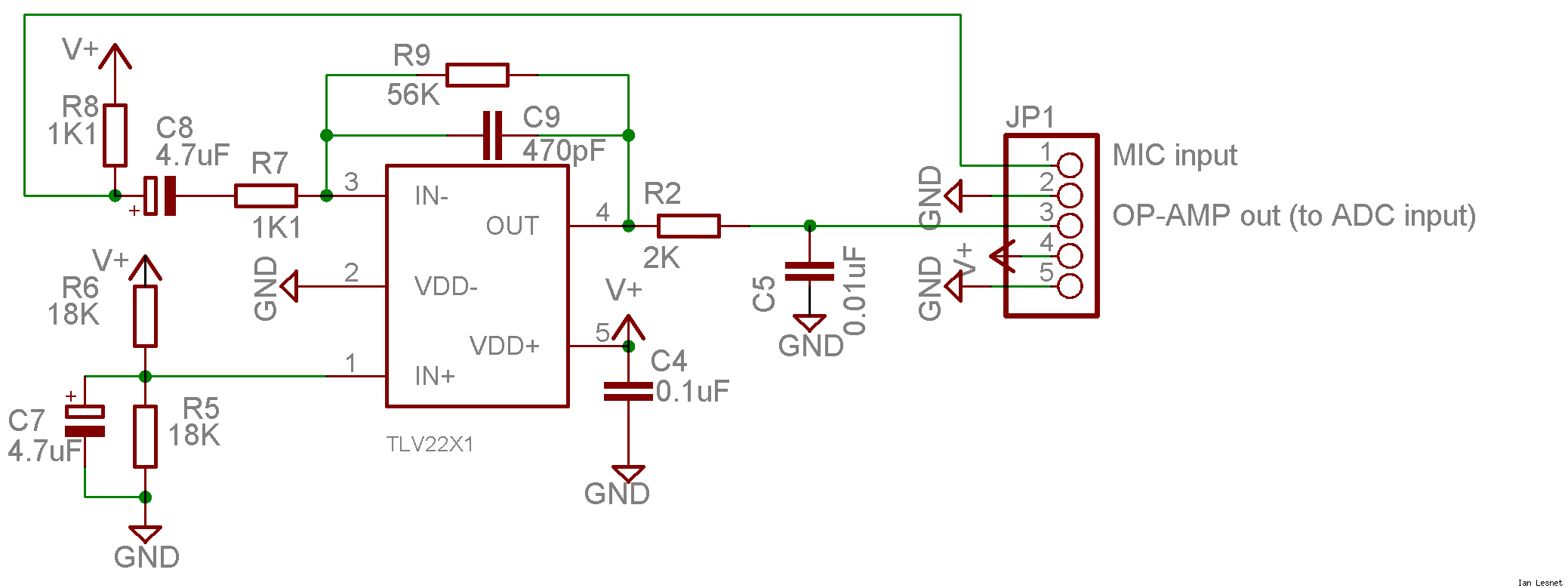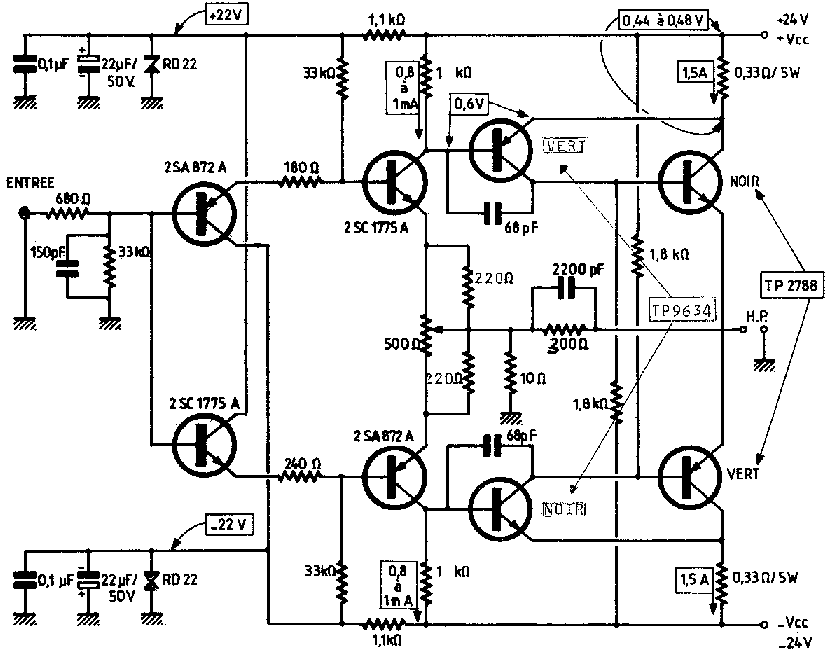
RF drive audio oscillator
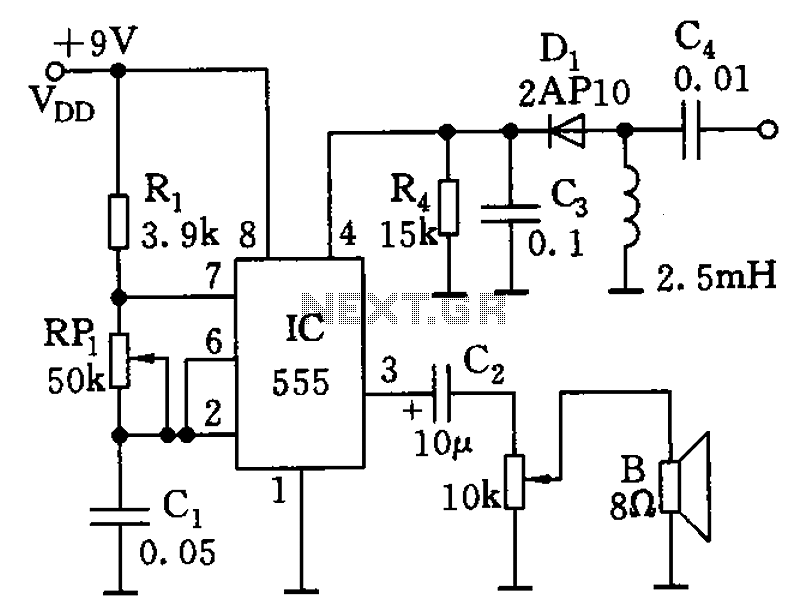
The circuit features a 555 timer along with resistors R1, RP1, and capacitor C1, functioning as a controllable audio oscillator. The frequency of the oscillator is determined by the formula f = 1.44 / ((R1 + 2 * RP1) * C1), allowing for frequency adjustments within the range of 600 Hz to 20 kHz by selecting appropriate values for RP1.
The described circuit utilizes the 555 timer in astable mode, which enables it to generate a continuous square wave output. The frequency of the oscillation is primarily influenced by the resistive and capacitive components connected to the timer. Resistor R1 is connected in series with the variable resistor RP1, which provides the ability to adjust the resistance and consequently the frequency of the output signal. The capacitor C1 is connected in parallel with the resistors and plays a critical role in determining the timing intervals of the oscillation.
In practical applications, the frequency range of 600 Hz to 20 kHz is suitable for various audio signal generation purposes, including tone generation, sound synthesis, and modulation applications. The ability to adjust RP1 allows for fine-tuning of the output frequency, making the circuit versatile for different audio applications.
The circuit can be implemented on a breadboard or a printed circuit board (PCB) for stability and durability. It is essential to ensure that the power supply voltage is within the operating range of the 555 timer, typically between 4.5V to 15V, to ensure reliable operation. Additionally, proper bypass capacitors should be included to filter any noise from the power supply, enhancing the performance of the oscillator.
Overall, this 555 timer-based audio oscillator circuit is a fundamental design that serves as an excellent introduction to oscillator design and audio signal processing, with numerous applications in electronic projects and sound-related endeavors.As illustrated, 555 and Rl, RPl, C1 controllable audio oscillator and other components, f 1.44/(R1 + 2RP1) C1, the parameters shown in the frequency between 600Hz ~ 20kHz, can be adjusted RP1 selected.
The described circuit utilizes the 555 timer in astable mode, which enables it to generate a continuous square wave output. The frequency of the oscillation is primarily influenced by the resistive and capacitive components connected to the timer. Resistor R1 is connected in series with the variable resistor RP1, which provides the ability to adjust the resistance and consequently the frequency of the output signal. The capacitor C1 is connected in parallel with the resistors and plays a critical role in determining the timing intervals of the oscillation.
In practical applications, the frequency range of 600 Hz to 20 kHz is suitable for various audio signal generation purposes, including tone generation, sound synthesis, and modulation applications. The ability to adjust RP1 allows for fine-tuning of the output frequency, making the circuit versatile for different audio applications.
The circuit can be implemented on a breadboard or a printed circuit board (PCB) for stability and durability. It is essential to ensure that the power supply voltage is within the operating range of the 555 timer, typically between 4.5V to 15V, to ensure reliable operation. Additionally, proper bypass capacitors should be included to filter any noise from the power supply, enhancing the performance of the oscillator.
Overall, this 555 timer-based audio oscillator circuit is a fundamental design that serves as an excellent introduction to oscillator design and audio signal processing, with numerous applications in electronic projects and sound-related endeavors.As illustrated, 555 and Rl, RPl, C1 controllable audio oscillator and other components, f 1.44/(R1 + 2RP1) C1, the parameters shown in the frequency between 600Hz ~ 20kHz, can be adjusted RP1 selected.
Warning: include(partials/cookie-banner.php): Failed to open stream: Permission denied in /var/www/html/nextgr/view-circuit.php on line 713
Warning: include(): Failed opening 'partials/cookie-banner.php' for inclusion (include_path='.:/usr/share/php') in /var/www/html/nextgr/view-circuit.php on line 713
